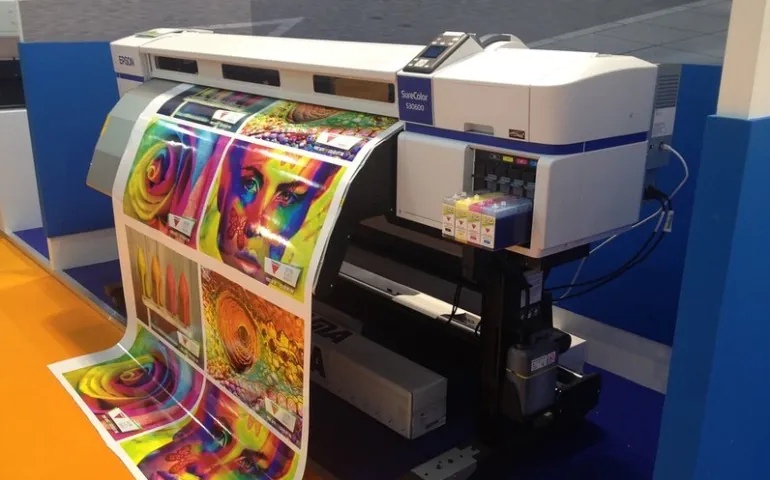The future of printing services is an exciting topic, as new trends and technologies continue to emerge. With the rise of digital media, many have questioned the fate of the printing industry. However, the printing business is far from dead in 2023. As the industry continues to adapt, it’s essential to understand where it’s headed. In this article, we’ll explore the future of printing services and the trends shaping the industry.
1. The State of the Printing Industry
Despite the rise of digital media, the future of printing services is far from doomed. In fact, the printing industry is evolving and adapting to new market demands. Advances in technology have led to the emergence of new printing services, such as custom 3D printing services and online catalog printing services.
While it’s true that some traditional print media might decline, other segments are flourishing. The future of printing services lies in finding innovative ways to cater to diverse customer needs.
2. Emerging Trends in Printing Services
Several trends are shaping the future of printing services. Here are some key trends to watch out for:
- Personalization: Consumers are increasingly seeking personalized products, leading to a surge in demand for services like custom printing services and business card printing services.
- Sustainability: As the world becomes more eco-conscious, the printing industry is shifting towards sustainable practices. This includes using recycled materials and eco-friendly inks.
- Digital Printing: Digital printing technology has advanced rapidly, offering high-quality prints with reduced setup time and costs. This trend is expected to continue, driving the future of printing services towards more digital solutions.
- 3D Printing: 3D printing has gained significant traction in recent years, with applications ranging from prototyping to manufacturing. The market for 3D printing services is expected to grow, providing new opportunities for businesses in the printing industry.
3. Innovations in Printing Technology
The future of printing services is closely tied to technological advancements. Some of the latest innovations in printing technology include:
- Inkjet Printing: Inkjet technology has made significant strides in recent years, allowing for faster, more accurate, and more affordable printing.
- Nanotechnology: Nanotechnology is being incorporated into the printing process, enabling the creation of new materials and surfaces with unique properties.
- Smart Packaging: The integration of printed electronics into packaging materials is revolutionizing the way products are packaged, stored, and shipped. This technology has applications in industries such as food label manufacturing and garment tags manufacturing.
4. The Future of Print Equipment Markets to 2026
According to industry reports, the global print equipment market is expected to experience steady growth up to 2026. This growth will be driven by the increasing demand for advanced printing technologies and the ongoing need for print services in various sectors, including packaging, textiles, and commercial printing.
5. The Rise of Print-on-Demand Services
Print-on-demand services have experienced significant growth in recent years. As more businesses and individuals turn to e-commerce, the demand for customized products and small-batch printing has increased. This trend is expected to continue, as print-on-demand services offer several advantages, including reduced inventory costs, minimal upfront investment, and the ability to quickly respond to changing market trends.
6. The Role of Augmented Reality in Printing
Augmented reality (AR) is an emerging technology that blends the physical and digital worlds. AR has the potential to revolutionize the printing industry by enhancing printed materials with digital content. For example, AR can be used to create interactive packaging, product labels, or promotional materials that engage consumers in new and exciting ways.
7. Growth of the Packaging Industry
The packaging industry is experiencing significant growth, fueled by the expansion of e-commerce and the increasing demand for sustainable packaging solutions. As a result, the future of printing services is closely tied to the packaging industry, with opportunities for businesses to provide innovative printing solutions for packaging materials, such as aluminum asset tag printer manufacturers and barcode paper label manufacturers.
8. The Impact of Industry 4.0 on Printing Services
Industry 4.0, also known as the Fourth Industrial Revolution, is characterized by the integration of digital technologies into traditional manufacturing processes. The printing industry is not immune to these changes, with the adoption of automation, artificial intelligence (AI), and the Internet of Things (IoT) driving the future of printing services. These technologies have the potential to improve efficiency, reduce waste, and enable new business models in the printing sector.
9. Expanding into New Markets and Services
To ensure continued growth and profitability, printing businesses must be willing to expand into new markets and services. This may involve exploring niche markets, such as art print manufacturing or book binding repair services, or offering complementary services, like blueprint printing services and commercial printing services.
The future of printing services is marked by continuous innovation and adaptation to changing market demands. Businesses that embrace new technologies, trends, and market opportunities are more likely to thrive in the competitive landscape of the printing industry. By keeping an eye on these trends and understanding their implications, printing businesses can better position themselves for success in the years to come.



